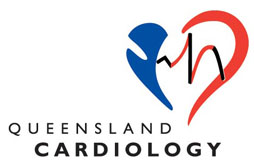Alcohol Septal Ablation
What is an Alcohol Septal Ablation?
Alcohol septal ablation is often used instead of open heart surgery to treat patients with symptomatic hypertrophic obstructive cardiomyopathy. Dr Con Aroney pioneered this procedure in Queensland.
What is Hypertrophic Obstructive Cardiomyopathy?
It is a genetic condition, where an abnormal thickened ridge of heart muscle develops, and obstructs flow from the outflow tract of the heart’s main pumping chamber – the left ventricle. When the obstruction becomes severe, patients may develop shortness of breath, chest pain on exertion (angina) or blackouts.
How is it done?
The procedure begins with an injection of local anaesthetic in both groins, and fine tubes (catheters) are put into the artery and passed up the heart. One tube is passed into the left coronary artery, and a series of pictures (an angiogram) are taken using X-Rays and X-Ray dye. The septal artery that supplies blood to the thickened abnormal ridge of heart muscle is identified by the angiogram.
A small sausage-shaped balloon is passed on a wire into the abnormal thickened muscle. Confirmation that the balloon is the abnormal part of the heart muscle is made with injection of contrast through the balloon and visualised on an echocardiogram. Following this a small volume of alcohol is injected the balloon into the small artery supplying the abnormal heart muscle, causing it damage (a localised small heart attack”). This causes immediate relief of the obstruction of blood flowing through the heart. Following this the heart tubes are all removed.
Benefits
The relief of the obstruction of blood flow leads to complete or partial relief of the symptoms of shortness of breath or chest pain, which is usually apparent immediately, but may progressively improve for 12 months.

How do I Prepare?




After the Procedure





Risks
The procedure can lead to the need for a permanent pacemaker in about 10% of patients. Bruising to the leg where the artery is punctured may also occur. Serious complications, such as major heart attack, stroke, perforation of the heart, severe palpitations or death are very rare.
There is some risk that the hypertrophied muscle may need treatment with a further septal ablation in the future, particularly if the thickening is very great.
Some high risk patients with hypertrophic cardiomyopathy, require treatment with an implantable defibrillator.
Follow-up
Follow-up consultation, including further echocardiography will be made with your cardiologist.
If you have any further questions, please contact us at:
Queensland Cardiology
St Vincent’s Private Hospital Northside
North Medical Suites, Green Lifts Level 3,
627 Rode Road
Chermside Q 4032
(07) 3861 5522

